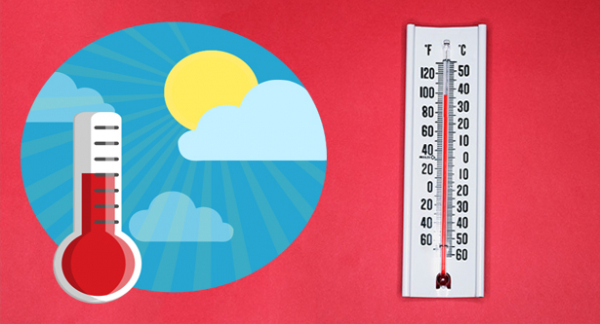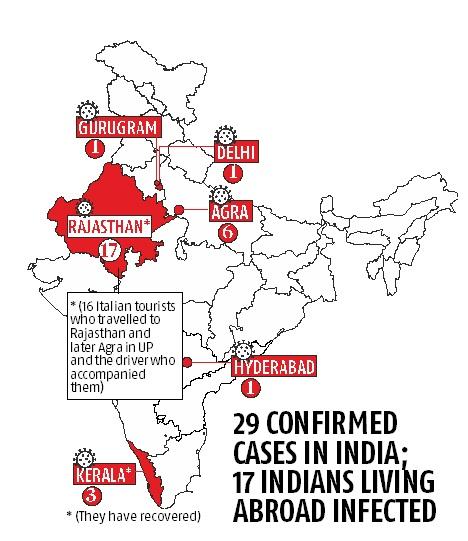

Though the number of coronavirus cases around the world has closed in on the 100,000 mark, and total deaths have crossed 3,300, the behaviour of the Sars-CoV-2 virus that causes the Covid-19 disease is yet to be revealed.
It is clear, however, that the virus causes infection through respiratory droplets from an infected person. So, quarantining a sick person is not enough if precautions are not taken to decontaminate surfaces that the patient came in contact with, and on which coronaviruses can survive for several days.
Studies have also found the Sars-CoV-2 detectable in other body fluids and excreta, which makes it critical for people to keep their surroundings clean and frequently wash their hands with soap and water, or water alone.
“Studying the viability of the virus is crucial for infection control because health workers are particularly susceptible to infection in hospital settings. Nosocomial transmission (in hospital) have been important drivers in the epidemiology of Sars and Mers, and data from China shows higher than average infection among healthworkers,” .

The Sars-CoV virus, which led to the 2002-2003 Sars epidemic and is perhaps the most similar of all such viruses infecting humans to the SARS-CoV-2, retains its viability for over five days on smooth surfaces like tables, doorknobs, phones and keyboards at temperatures of 22–25°C and relative humidity of 40–50% — conditions typical of air-conditioned environments.
While the viability of the Sars-CoV is rapidly lost at above 38°C, and relative humidity of over 95% (which means it is not infective very long outdoors in the hot, dry Indian summer), it survives for hours indoors and closed environments, where the risk of infection is highest.
“Sars-CoV is more stable in a low temperature and low humidity, which explains why outbreaks happened in sub-tropical Hong Kong in spring and in air-conditioned environments, while there were no major community outbreaks in hot countries like Malaysia, Indonesia or Thailand,” said a scientist at the Indian Council of Medical Research (ICMR), requesting anonymity.
Heating to 56°C for 15 minutes kills the Sars-Cov — which is unrealistic in any natural environment — but it is stable for 2 days following drying on plastic.
In such a scenario, the only protection against infection is regular hand washing, covering mouth and nose when coughing and sneezing, and thoroughly cooking meat and eggs. It is also advisable to avoid close contact with anyone showing symptoms of respiratory illness, specially a dry cough.
Though the exact nature of the Sars-CoV-2 virus is unclear, scientists believe the same precautions may be applicable. The virus shares a 79% genetic affinity with Sars-CoV, and 50% with Mers-CoV .
“This (Sars-CoV2) is a new virus and we don’t know enough, but what we know is that it stays infective longer than the seasonal flu viruses that stay contagious for 8-10 hours on most non-porous metal and plastic surfaces, such as doorknobs and computer keyboards. That, along with the longer incubation period of 14 days compared to seasonal flu, make containment efforts a challenge,” added the ICMR scientist.
All Sars viruses have been particularly cruel to health workers, who, in the absence of a vaccine, have personal protection equipment to fall back on. “Transmission of all coronaviruses has been higher in health care settings and during close family and social contacts, which makes it important to study indirect route of transmission, such as aerosolization of virus and transmission through air-conditioning ducts in apartment buildings,”
Information about Sars-CoV-2 has started trickling in, and shows it is closely related to (88% identity) to two bat-derived Sars-like coronaviruses, bat-SL-CoVZC45 and bat-SL-CoVZXC21, so transmission must be stopped before community transmission becomes worldwide, according to a recent study in The Lancet.
The Sars-CoV is providing more clues to the behaviour of the new virus. The Sars-CoV-2 receptor-binding domain structure, which allows a virus to latch on to and enter a cell, is similar to Sars-CoV, which scientists are using to seek ways to disrupt transmission, including the effect of heat and humidity.
There is still hope. Since viruses can’t multiply on their own, they must infect living cells to survive. This has made it possible to use vaccines to eradicate smallpox causes by variola virus and, in many countries such as India, end polio caused by polioviruses. But eradication is possible only when there is no animal reservoir for the virus.
Since coronaviruses have animal reservoirs, outbreaks in humans can be contained if community transmission doesn’t happen. Outbreaks of Sars-CoV transmitted from civet cats to humans, and Mers-CoV that came from dromedary camels to humans, were contained because community transmission didn’t happen. “It is possible to contain outbreaks of zoonotic viruses by stopping transmission in humans, as was done for Severe acute respiratory syndrome (Sars), and Middle East Respiratory Syndrome (Mers), but the threat of transmission from animals remains.